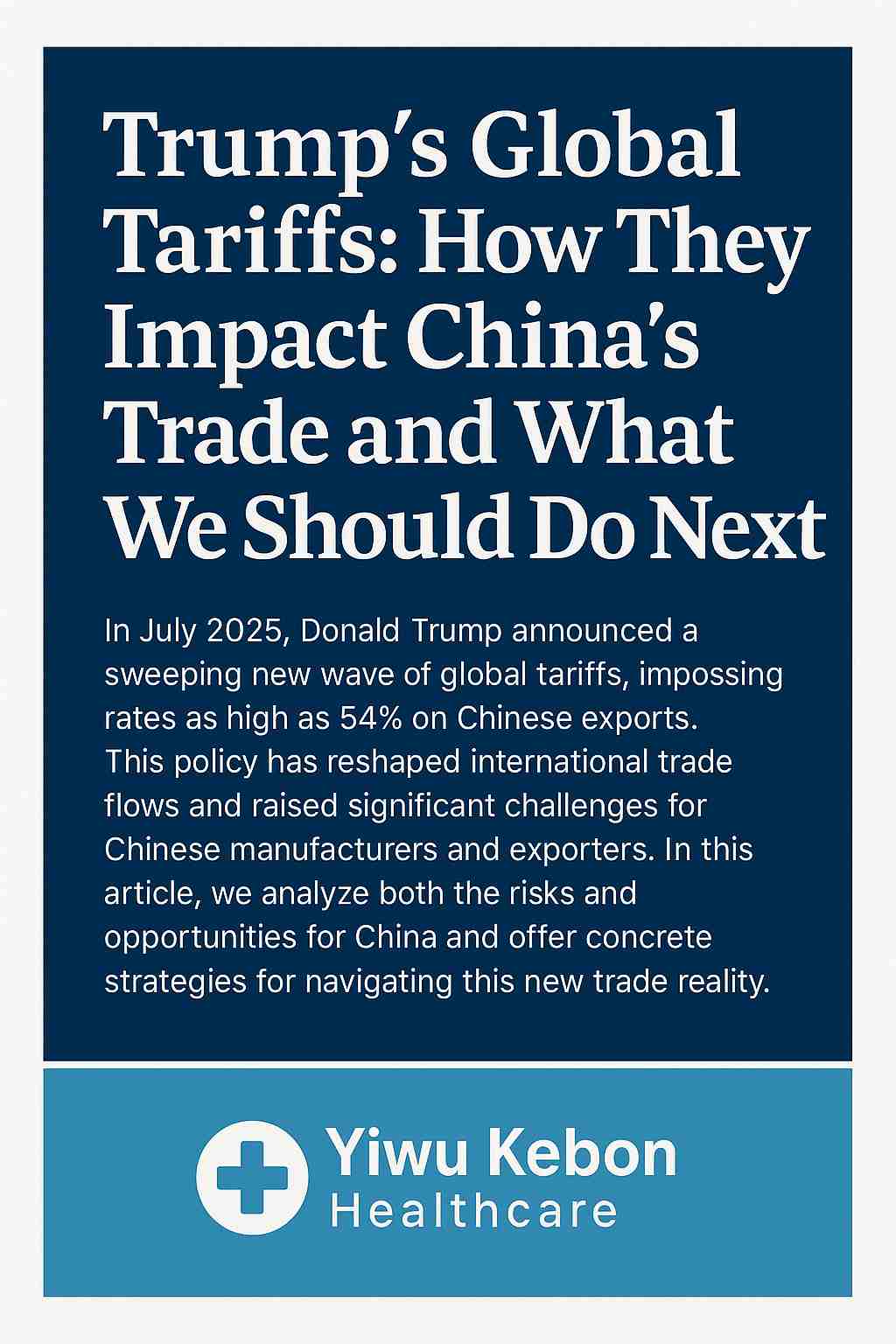Trump’s Global Tariffs: How They Impact China’s Trade and What We Should Do Next
Trump’s Global Tariffs: How They Impact China’s Trade and What We Should Do Next
In July 2025, former U.S. President Donald Trump unveiled a comprehensive global tariff policy targeting 69 countries. Among them, China faces the highest tariff rate of up to 54%, directly affecting a broad range of exports—from electronics and textiles to medical and survival gear.
The Challenges for Chinese Exporters
1. Increased Export Costs
Higher tariffs make Chinese products less price-competitive in the U.S. market. This is especially concerning for manufacturers in labor-intensive industries, such as garments, electronics, and consumer medical kits.
2. Supply Chain Disruption
Many Chinese companies rely on integrated global supply chains. Sudden tariff hikes force exporters to reroute orders, renegotiate contracts, and absorb increased shipping and logistics costs.
3. Order Cancellations & Investment Delays
Some U.S. distributors have delayed or canceled orders. Exporters are facing rising uncertainty, making it difficult to plan production and expansion.
The Opportunities
1. Push Toward Product Upgrade & Innovation
The tariff pressure could accelerate a long-term shift toward higher-value products and patented designs. Quality, innovation, and branding are becoming key differentiators in avoiding price wars.
2. Diversification of Export Markets
Many Chinese manufacturers are actively expanding into emerging markets like Southeast Asia, Latin America, the Middle East, and Africa to reduce dependency on the U.S.
3. Rise of Nearshoring & Overseas Warehousing
To mitigate tariff costs, some exporters are setting up overseas warehouses or assembly lines in third countries (e.g., Mexico, Vietnam, UAE) to qualify for preferential trade treatment.

✅ What We Should Do: Strategic Recommendations
1. Upgrade Product Lines
Focus on certified, high-performance, and value-added products. For example, in our first aid kit industry, upgrading to ANSI-certified or tactical-level kits helps penetrate niche and high-end markets.
2. Strengthen Brand Presence
Build brand awareness through digital marketing, multilingual websites, and certifications (FDA, CE, ISO). A strong brand can justify premium pricing and build trust in new markets.
3. Target Non-Tariff Markets
Explore regions less impacted by U.S. policies: Europe (with CE certification), Japan (with child-safe designs), Middle East (CIF-friendly shipping), and Africa (bulk supply opportunities).
4. Develop Overseas Logistics Channels
Establish bonded warehouses or partnerships with local distributors in low-tariff countries. This strategy improves delivery speed and reduces exposure to tariff shocks.
🌐 Final Thoughts
While Trump’s aggressive tariff strategy brings real challenges to Chinese exporters, it also opens a critical window for transformation. With proactive adjustment, diversification, and innovation, Chinese companies—especially in manufacturing—can weather the storm and build stronger, more resilient global brands.
At Yiwu Kebon Healthcare, we continue to provide high-quality, customizable first aid kits for families, schools, pets, and tactical needs—always ready to adapt in a changing global environment.



